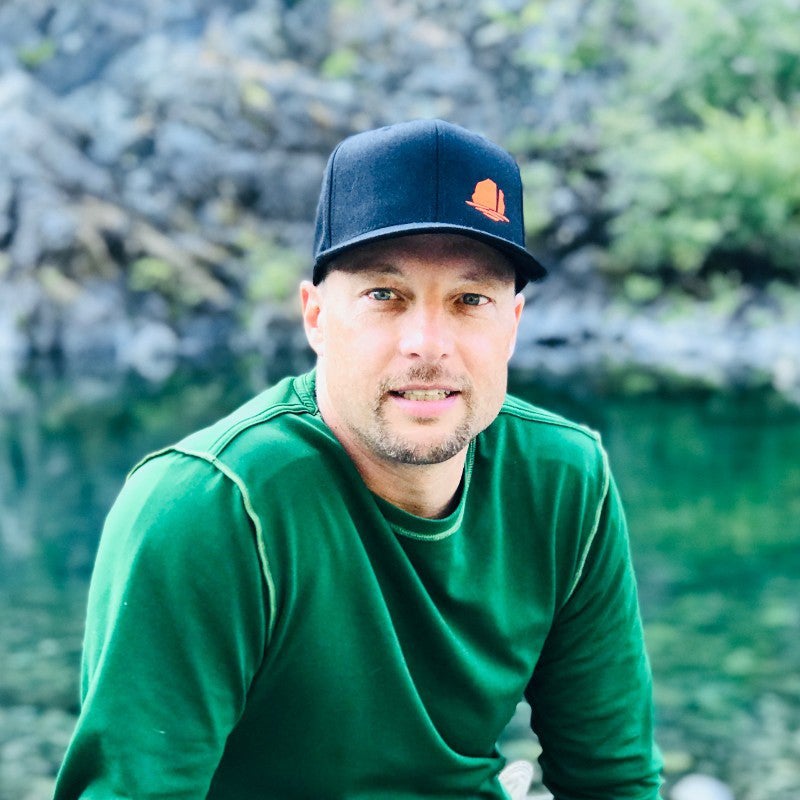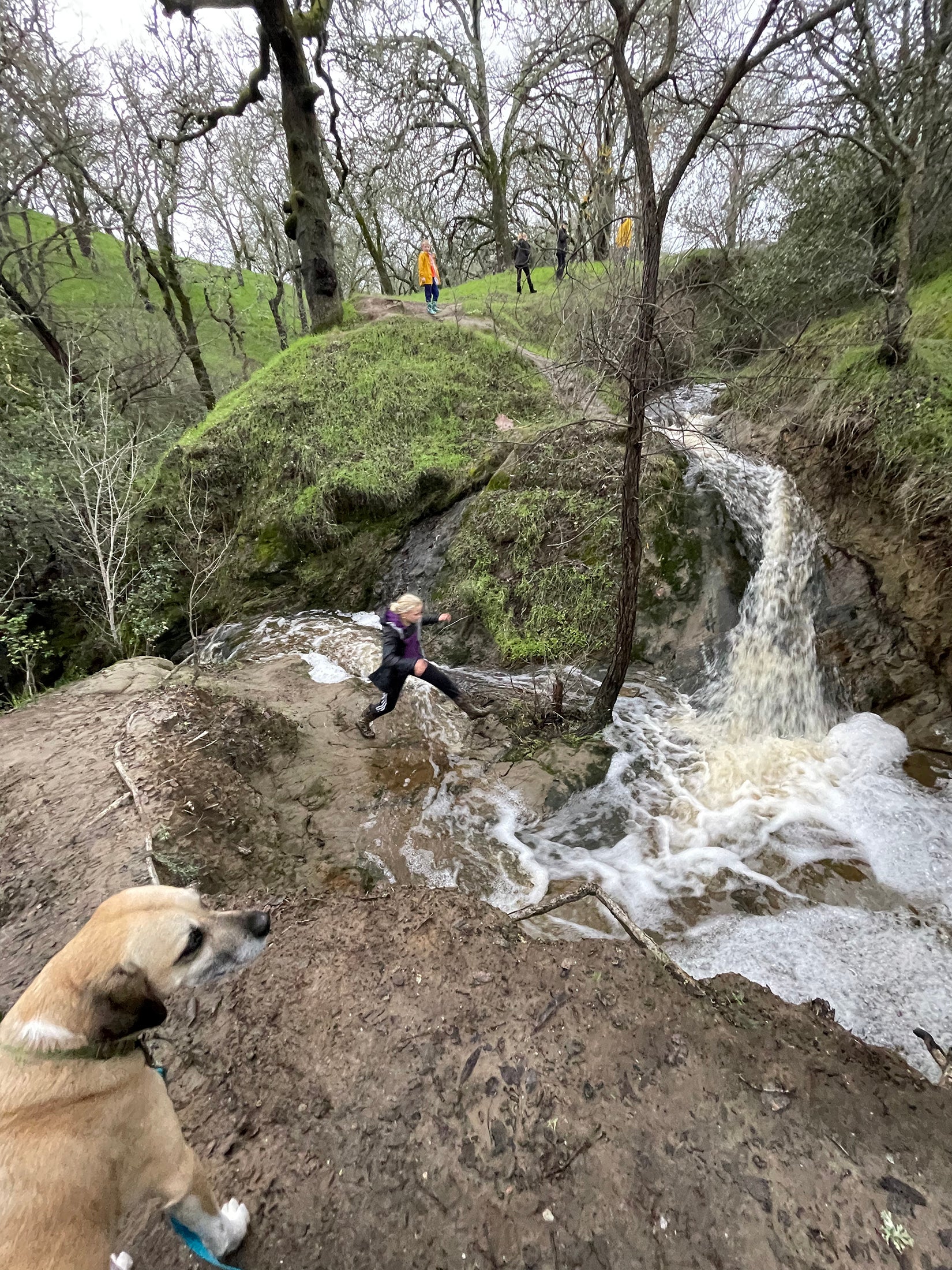KINGSTON, R.I. – Feb. 10, 2023 – As reports of atmospheric rivers and life-threatening floods in California captured headlines at the start of this year, making 2023 a year for the weather history books, one URI water researcher found himself up close with the issue in a decidedly personal way. Kyle Young, a Ph.D. candidate in hydrogeology at the University of Rhode Island, now living in Martinez, California, found his own home impacted by the flooding and severe storms. While his studies at URI and career in the Coast Guard have given the search-and-rescue pilot a definite appreciation for the power of water, his recent personal experience added another dimension to his appreciation for the water’s impact.
Recently retired from more than 20 years of military service as a Coast Guard pilot, aeronautical engineer and physics instructor, Young is currently working towards a Ph.D. in Biological and Environmental Sciences at URI. A recent move to California for family reasons is having him finish his program remotely.

Young grew up in Portland, Oregon (so he’s no stranger to rain) and joined the Coast Guard in 1998. He taught physics at the U.S. Coast Guard Academy and has served numerous Coast Guard operational tours, including as a search-and-rescue helicopter pilot in San Francisco and Traverse City, Michigan. Young’s time in the Coast Guard gave him an up-close perspective on water crisis events, as his career has taken him to the Arctic, Antarctic, Caribbean, and to various locations in the U.S.
Despite having flown rescue missions in significant storms in Northern California and the Great Lakes, and lived through four hurricanes when stationed in Florida, Young says he’s never seen weather like this.
“Atmospheric rivers were not new to me,” he says. “I had witnessed them previously and even considered them as a possible focus of study, but have never witnessed them at this magnitude. Nine atmospheric rivers at once is just unprecedented. You normally only see one or two at a time. This area of California has not seen anything of this magnitude since the Great Flood of 1862; this was an exclamation point event.”
“The second week of it was just overwhelming, mind-boggling, the constant onslaught going from storm to storm. There was just so much torrential rainfall. In a hurricane, the tropical storms leave. In this case, they just kept coming.”
Luckily, his family is now okay and Young is in the process of continuing to restore his home to rights, while his neighbors are approaching him for his water expertise.
Water at URI
Young came to URI in 2019 to pursue his Ph.D. while teaching at the Coast Guard Academy in New London. “URI was the best fit for me in terms of programs I looked at,” he says. “The program is collaborative and I’ve enjoyed the chance to explore a variety of projects. I appreciate the opportunities for creativity and exploration.” At URI, he says he found a collaborative and dynamic environment.
Young joined Soni Pradhanang’s lab in Geosciences, part of the University’s “water cluster,” and teamed with Rebecca Robinson’s lab at the URI Graduate School of Oceanography to investigate coastal groundwater discharge and pollution and its impact on coastal ecosystems. Young even shared his expertise with students in the Introduction to Water Resources general education class, as a guest lecturer. He has a wealth of real-life water knowledge to share, having started his Coast Guard career as an engineer and diver on a POLAR class icebreaker.
While California and Rhode Island are 2,500 miles apart, seemingly worlds away in size, topography and challenges, many of the issues are the same; recent flood events in Rhode Island indicate that challenges as seen in California can happen on the East Coast and other parts of the country as well.
Though the helicopter provided a distinct vantage point on water in the rescue missions he flew, Young decided he wanted to spend more time looking at what causes water problems and how to solve them, outside of emergency mode. He says he was drawn to academia as a way to help find solutions to pressing environmental and natural resource challenges. Still, his Coast Guard expertise came in handy. He used his flying skills (and pilot’s license) to fly a drone over Ocean State coastal ponds, tracking water movement deep underground with an infrared thermal imaging camera.
Young and his hydrology colleagues say that such events will come again. Climate scientists predict that such large events will happen again, and more frequently. “We need to learn more so we can anticipate and better weather them,” he says.
He’s also interested in the dynamics of hillslope runoff and groundwater/aquifer recharge, which he researched as a master’s student at UC Santa Cruz a decade ago. Now living east of San Francisco and working as a geophysicist, the hills of San Francisco and outlying areas will certainly give him a real-world lab to work in.
Young hopes that his previous research in the growing field of managed aquifer recharge will inform projects such as infiltration basins and dry wells that can help replenish groundwater resources, protect coastal aquifers, and improve water sustainability. Proactive management will be important for the future, he says; municipalities in all parts of the country need to take an active role in preparing and managing. Young predicts that climate change and large events such as these will drive societal action towards necessary sustainability measures, such as implementing managed aquifer recharge throughout the arid west. “Despite the tremendous rainfall we just received, California’s aquifers remain in a state of chronic overdraft. Meanwhile, most of that rain ran off into the ocean – a tremendous lost opportunity for this region’s depleted groundwater systems.”
As his house and property dry out and his neighborhood returns to normal, Young is returning his focus to the ground, instead of the sky, continuing his research in groundwater and coastal aquifer management, thinking about how to handle rain runoff in large precipitation events such as this.
It’s a newer academic field, as universities across the country are developing a lexicon of water planning and the needs for those with expertise in the field will be anywhere there is water. “The urgency of this work is becoming more potent,” Young says, pointing to the need to find solutions to manage rainfall, replenish aquifers, and handle drought and storms to come.
Young says he was shocked to see how much change can happen in the landscape in a short amount of time. “Witnessing it with my own eyes, so dramatically, was very different from studying it – being able to witness that change occur overnight… All considered, I feel fortunate.”

